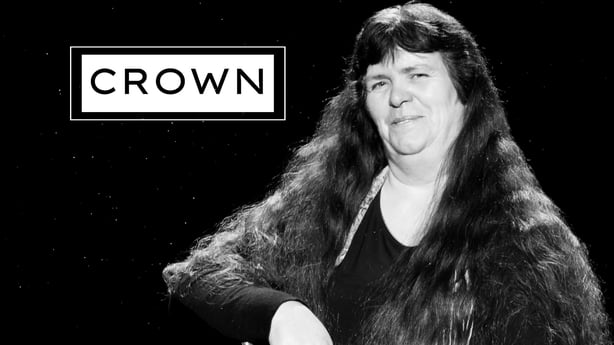Musician and artist Breda Mayock writes for Culture about Crown, a new exhibition celebrating hair and identity in Traveller Culture - watch a short film about the Crown project above.
Irish Travellers are an indigenous ethnic minority that has been part of Irish society for centuries. They have their own language – Gammon or Cant – and in this language their name is Mincéirí. Travellers/Mincéirí share traditions, cultural values, language and customs that make them a distinct group. In particular, nomadism as a way of life distinguishes them from the settled population.
Throughout Irish history, Travellers have lived on the margins of mainstream Irish society. Down the centuries, Traveller culture and identity, far from being a subject of interest and celebration, have been at the root of stereotyping, discrimination and racial prejudice.
In March 2017, Irish Travellers were at last recognised by the Irish state as an ethnic minority, following years of activism.
Growing up in the west of Ireland, I remember having a natural curiosity and admiration for Traveller people. I learned traditional Irish music and through the years I became aware of the Traveller culture of touring entertainers, from busking musicians to carnival people. My Father showed me the field in our village where the touring carnivals and cinemas were set up when he was a boy. Travellers brought songs and stories from town to town and developed their own unique styles of singing, storytelling, and playing musical instruments. Through the tunes that I learned, I was a fortunate recipient of this musical heritage.

Hair is, to me, a unique feature of Irish Traveller women and one that I have always admired. There is a tradition of artistry with regard to hair amongst female Travellers. As a visual artist I'd be very aware of and interested in the huge canon of work by artists on the subject of hair. Hair is a powerful symbol of individuality and it is deeply linked to identity, It is a tangible human raw material, and so it communicates stories, meanings, and memories in a very powerful way.
In October 2019 I determined to explore this subject and I got in touch with Traveller girls and women in Mayo to talk to them about hair. Why this long luxurious flow in all its glory – plaits, rolls, ribbons, topknots and curls? What have the women to say about their hair, its physical appearance, its traditions, its rituals, and what it means to them?
We talked, we explored, we swopped stories. We worked with photographer Orla Sloyan, setting up photo shoots with a special emphasis on capturing the unique aesthetic expression through hair. We discussed a name for our project. The title Crown came up because of the phrase Crowning Glory, which is very appropriate considering many Traveller women's relationship with their hair.
We launched crowncloseup.ie in April 2020. This was followed by plans for two photographic exhibitions in October 2020 in Linenhall Arts Centre, Castlebar and the National Museum of Ireland, Country Life in Turlough Park. The exhibitions opened at the beginning of October. We made two short films about the exhibitions and the participants, with the award-winning filmmaker Mia Mullarkey, just before the level 5 restrictions came in again. Both exhibitions, Crown Beoir and Crown Lakeen will run until January 30th 2021.

We have had the great fortune of being in touch with the writer and activist Rosaleen McDonagh, who penned two captivating pieces on the subject of hair; you can read these on crowncloseup.ie.
I am grateful to the Traveller women and girls who have shared their stories and insight and who have given so generously of their time. Crown will grow and take on many subjects and forms in the future; we have already talked about new ventures. For now, it is an opportunity to celebrate this unique, challenging and beautiful aspect of female Traveller Culture.
Find out more about the Crown projects here. Funding from Creative Ireland Mayo and Healthy Ireland for this project is gratefully acknowledged, as is support from Mayo County Council Arts Service.
Find out more about RTÉ Supporting The Arts here, and the Creative Ireland Programme here.
